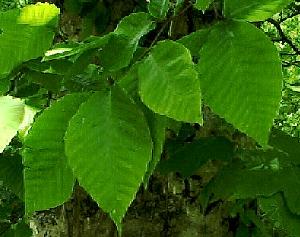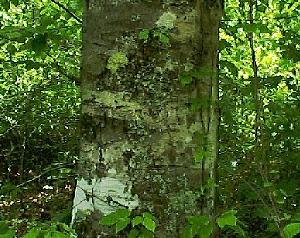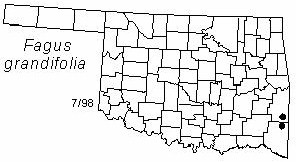

Tree to 20 m (65 ft) tall and 60 cm (2 ft) diameter, with broad rounded crown. Bark smooth, gray, thin. Twigs slender, brown, slightly zigzag, often with numerous side branches or spurs. Buds very long, sharp-pointed, glabrous, with numerous shiny red-brown scales. Leaves alternate, usually clustered on spurs, elliptical or ovate, 6-13 cm (2.4-5.1 in) long and 3-6 cm (1.2-2.4 in) wide, with numerous straight parallel side veins ending in a tooth on the coarsely serrate margins, dark blue-green above, pale green below, turning yellow to brown in fall. Fruits are brown prickly burs 15-20 mm (0.6-0.8 in) long, seeds (usually 2) shiny brown and edible.
Distribution: Native to about the eastern third of the United States and southeastern Canada. Rare in Oklahoma.
Habitat: well-drained bottomland forests, mesic upland forests.
NWI status: FACU
Comment: The wood is used in furniture and cooperage and the nuts are eaten by deer, squirrels, and birds. Fagus is an old Greek word for the edible nuts of European beech; grandifolia refers to the large leaves.
Distribution in Oklahoma: 
BACK
NEXT
RETURN TO INDEX
Last update: 9/10/99
 Go to Oklahoma Biological Survey Home Page
Go to Oklahoma Biological Survey Home Page
 Disclaimer
Disclaimer